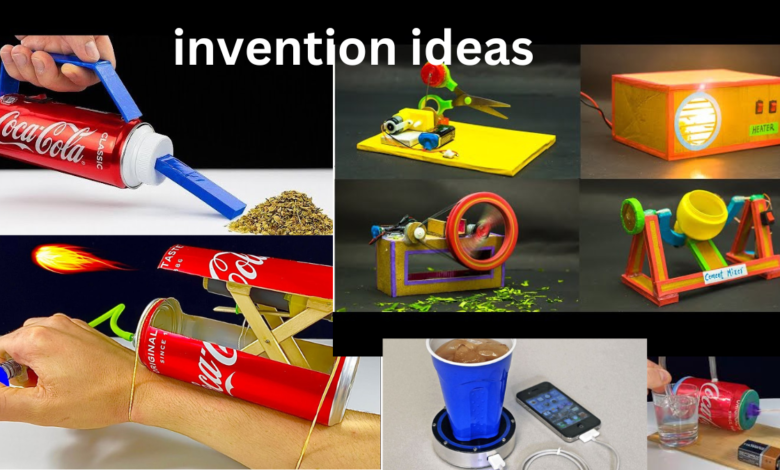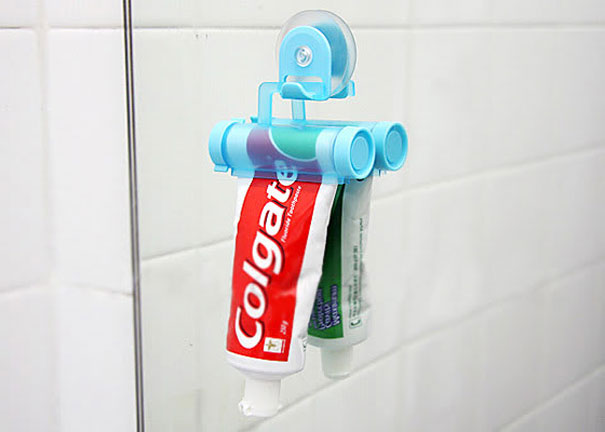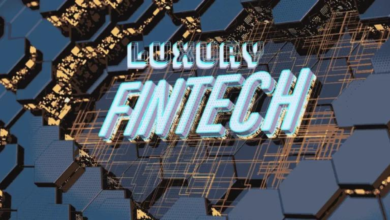Invention Ideas: Sparking Creativity and Innovation

The world has been shaped by brilliant invention ideas that started as simple ideas. From the light bulb to the internet, each innovation has its origins in the mind of an individual who saw a problem and thought of a creative solution. If you’re someone who enjoys thinking outside the box and brainstorming new ways to improve the world, then you’ve probably found yourself contemplating invention ideas at some point. But how do you take those initial sparks of creativity and turn them into real, impactful innovations? In this article, we’ll dive into what invention ideas are, how to come up with them, and the journey from concept to creation.
What Are Invention Ideas?

Invention ideas are the raw, creative thoughts that can lead to new products, processes, or solutions. They often begin as small insights or “aha!” moments where you recognize a gap in the market, an inefficiency in a process, or an opportunity to make life easier. However, having an idea is just the first step. The real challenge comes in refining that idea, developing it, and eventually turning it into a tangible product or service.
The Definition of an Invention Idea
At its core, an invention idea is a novel thought or concept aimed at solving a particular problem. It might be a completely new product or an improvement to an existing one. The key to a successful invention idea lies in its originality and potential impact. Even the most groundbreaking inventions started as simple ideas — the wheel, for example, was an idea for reducing friction and making transportation easier.
While invention ideas can seem daunting, they don’t need to be highly complex. Many successful inventions are incredibly simple, solving everyday problems that people face. Think of the Post-it note or the paperclip — small but highly effective ideas that revolutionized how people organize their work.
The Importance of Creativity
Creativity is the driving force behind every invention idea. Without it, the world would be stagnant, and progress would grind to a halt. Being open-minded, curious, and willing to think outside the norm is essential for generating new ideas. In today’s fast-paced, technology-driven world, invention ideas often focus on solving modern challenges, whether they relate to sustainability, healthcare, or technology.
Why You Should Consider Your Invention Ideas
You don’t need to be an engineer or a scientist to come up with great invention ideas. Anyone can brainstorm potential innovations, and in many cases, the most successful ideas come from people who aren’t experts in a particular field. By considering the world around you, identifying areas where improvements can be made, and fostering your creative instincts, you may just stumble upon the next big thing.
How to Come Up with Invention Ideas
While some people seem to have a natural gift for inventiveness, the truth is that coming up with inventive ideas is a skill that can be developed. Whether you’re looking to create the next cutting-edge technology or just a clever household gadget, the process of brainstorming and refining invention ideas is one that takes practice and patience.
Observation: The Key to Identifying Problems
One of the simplest and most effective ways to come up with invention ideas is by observing the world around you. Pay attention to the problems people face in their everyday lives — from minor annoyances to major challenges. Think about how things could be improved. Are there ways to make existing products more efficient or easier to use? Are there problems people encounter frequently that don’t have a good solution yet?
For instance, the invention of the Roomba, the robot vacuum cleaner, came about because people found traditional vacuuming to be time-consuming and inconvenient. By recognizing this pain point, the inventors were able to create a product that solved a real-world problem in a novel way.
Combining Existing Ideas
Innovation doesn’t always mean coming up with something entirely new. Sometimes, great invention ideas come from combining two or more unique concepts uniquely. For example, the smartphone combines the functionality of a computer, camera, phone, and music player into a single device. The same can be done on a smaller scale in various industries.
Think about existing products and services, and consider how they could be merged to create something new. This method of combining ideas can often lead to inventions that are more practical and easier to develop because they build on concepts that are already familiar.
Reverse Engineering: Start with the Solution
Another technique for generating invention ideas is to start with the solution and work backward. This is known as reverse engineering. In this method, you begin by imagining the perfect solution to a problem, even if it seems impossible. Then, you work backward to figure out how that solution could be achieved.
For instance, if your goal is to make long-distance travel faster and more energy-efficient, you might start by imagining a vehicle that can travel at high speeds without using fossil fuels. Once you have that idea in mind, you can begin thinking about the technologies that could potentially make it a reality, such as electric propulsion or sustainable energy sources.
Brainstorming Sessions
Brainstorming sessions are a classic method for generating ideas, including invention ideas. Whether you’re working alone or with a group, the goal is to generate as many ideas as possible, without worrying too much about whether they’re practical or realistic. The key to a successful brainstorming session is to let your creativity flow and avoid self-censorship. Write down every idea, no matter how outlandish it may seem — sometimes the most unusual ideas lead to the best inventions.
After the brainstorming session, you can go back and evaluate the ideas more critically, narrowing down the list to the most promising concepts.
The Process of Refining Invention Ideas
Coming up with an invention idea is just the first step in a much longer process. Once you have a concept in mind, it’s time to refine that idea and figure out how it can be turned into a viable product or solution. This part of the process is often where many would-be inventors get stuck, but with the right approach, you can successfully move from concept to creation.
Research and Development
Before you can begin developing your invention idea, it’s essential to do some research. Has someone already come up with a similar idea? Are there existing products or patents that could pose a barrier to your invention? By thoroughly researching the market and the competition, you can gain a better understanding of the feasibility of your idea.
In addition to market research, you’ll need to look into the technical aspects of your invention. This might involve learning about materials, manufacturing processes, or technologies that could be used to bring your idea to life. If you’re not an expert in the field, don’t be discouraged — there are plenty of resources available to help you learn what you need to know.
Prototyping: Bringing Your Idea to Life
Once you’ve done your research, the next step is to create a prototype of your invention. A prototype is a working model or representation of your idea that allows you to test its functionality and identify any potential issues. In some cases, a prototype may be a simple sketch or a 3D-printed model, while in other cases, it may involve creating a fully functioning version of the product.
Prototyping is an essential step because it allows you to see your idea in action and make any necessary adjustments before moving on to the production stage. It’s also a great way to demonstrate your invention to potential investors or partners, as it gives them a clear idea of how the product works.
Testing and Iteration
Invention is an iterative process. Once you have a prototype, it’s important to test it thoroughly and gather feedback from users. This feedback can help you identify any flaws or areas where the product could be improved. By continuously testing and refining your invention, you can ensure that the final product is as effective and user-friendly as possible.
Don’t be discouraged if your initial prototype doesn’t work perfectly — most inventions go through multiple iterations before they’re ready for the market. The key is to learn from each round of testing and make the necessary improvements.
Protecting Your Invention Idea
Once you’ve developed a solid invention idea, the next step is to protect it. After all, you don’t want someone else to take your idea and profit from it without your permission. There are several ways to protect your intellectual property, depending on the type of invention you’ve created.
Patents: Protecting Your Idea Legally
The most common way to protect an invention is by applying for a patent. A patent is a legal document that gives you exclusive rights to your invention, preventing others from making, using, or selling it without your permission. There are different types of patents, including utility patents, which cover new processes or products, and design patents, which protect the unique appearance of a product.
Obtaining a patent can be a lengthy and expensive process, so it’s important to do your research and ensure that your invention qualifies for patent protection before applying. In some cases, it may be worth consulting with a patent attorney to help you navigate the application process.
Trademarks and Copyrights
In addition to patents, other forms of intellectual property protection may apply to your invention. For example, if you’ve created a unique logo or brand name for your product, you can apply for a trademark to protect it. Similarly, if your invention involves creative works such as software, artwork, or written materials, you may be able to protect it with copyright.
Non-Disclosure Agreements (NDAs)
If you’re sharing your invention idea with others, such as potential investors or manufacturers, it’s a good idea to have them sign a non-disclosure agreement (NDA). An NDA is a legal contract that prevents the other party from sharing or using your idea without your consent. This can help protect your invention while you’re in the process of developing it.
Taking Your Invention Idea to Market
Once you’ve developed and protected your invention idea, the next step is to bring it to market. This is often the most challenging part of the invention process, as it requires not only a great product but also a solid business plan and marketing strategy.
Licensing vs. Manufacturing
There are two main ways to bring an invention to market: licensing and manufacturing. Licensing involves selling the rights to your invention to a company that will produce and market it on your behalf. In exchange, you’ll receive royalties on the sales of your product. This can be a good option if you don’t have the resources to manufacture and market the product yourself.
Manufacturing, on the other hand, involves producing and selling the product yourself. This gives you more control over the process, but it also requires a significant investment of time and money. You’ll need to handle everything from production and distribution to marketing and sales.
Creating a Business Plan
If you decide to manufacture and sell your invention, it’s essential to have a solid business plan in place. This should include a detailed outline of how you’ll produce the product, how much it will cost, and how you’ll market it to your target audience. You’ll also need to consider distribution channels, pricing strategies, and potential competitors.
A well-thought-out business plan can help you secure funding from investors or lenders, as it demonstrates that you’ve carefully considered all aspects of the business.
Marketing Your Invention
Even the best inventions won’t sell themselves. To be successful, you’ll need to have a strong marketing strategy that effectively communicates the benefits of your product to potential customers. This might involve creating a website, running social media campaigns, or attending trade shows to showcase your invention.
The key to successful marketing is understanding your target audience and tailoring your message to meet their needs. By highlighting how your invention solves a specific problem or makes life easier, you can attract the attention of potential customers and generate interest in your product.
Common Pitfalls to Avoid
Bringing an invention idea to life is a challenging process, and there are several common pitfalls that many inventors encounter along the way. By being aware of these potential obstacles, you can increase your chances of success.
Underestimating the Time and Cost
One of the biggest mistakes that inventors make is underestimating the time and cost involved in developing an invention. From research and development to prototyping and marketing, the process can be time-consuming and expensive. It’s important to have realistic expectations and be prepared for setbacks along the way.
Failing to Protect Your Idea
Another common pitfall is failing to protect your invention idea before sharing it with others. Without proper legal protections in place, you run the risk of someone else stealing your idea and profiting from it. Be sure to take the necessary steps to protect your intellectual property before moving forward with development.
Neglecting the Business Side
Many inventors are so focused on the technical aspects of their inventions that they neglect the business side of things. However, having a great product is only half the battle — you also need to have a solid business plan and marketing strategy in place if you want to succeed in bringing your invention to market.
Conclusion
Invention ideas are the seeds of innovation, and with the right approach, they can grow into products and solutions that have a real impact on the world. Whether you’re looking to create the next revolutionary technology or simply make life a little easier with a clever gadget, the process of developing and refining invention ideas is both challenging and rewarding.
By observing the world around you, combining existing ideas, and engaging in brainstorming sessions, you can generate new and innovative concepts. From there, it’s a matter of refining your idea, protecting it, and bringing it to market.
The journey from idea to invention is rarely straightforward, but with perseverance, creativity, and the right strategy, you can turn your invention ideas into reality. So, what are you waiting for? Start brainstorming and see where your creativity takes you!





